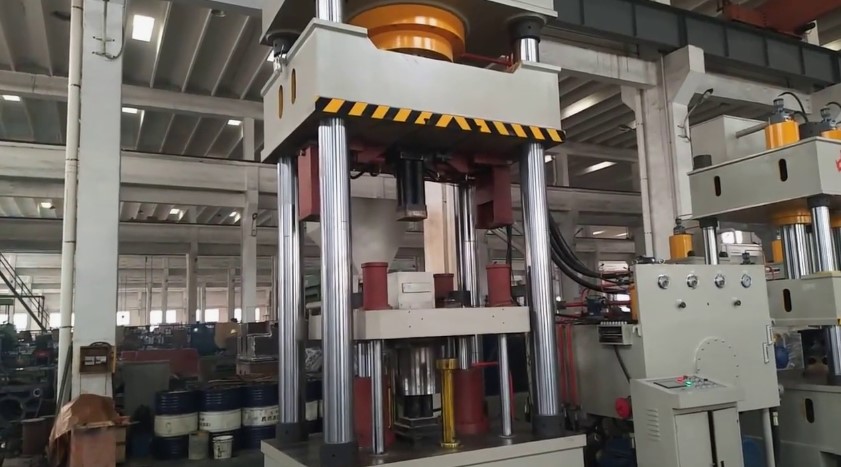The rugged highlands, the sun-scorched lowlands, the rainy seasons, and the dusty dry spells—Ethiopia’s breathtaking beauty is matched only by the extremity of its climate. For industries driving the nation’s growth, from agriculture and construction to mining and manufacturing, this presents a formidable challenge: keeping heavy machinery operational and efficient. At the heart of this challenge lies a single, critical component—hydraulic oil.
Choosing the right hydraulic oil isn’t merely a maintenance task; it’s a strategic decision that impacts productivity, machinery longevity, and the bottom line. The wrong grade can lead to catastrophic system failures, exorbitant downtime, and costly repairs. So, what is the best grade of hydraulic oil to withstand Ethiopia’s unique and demanding weather conditions? This in-depth guide cuts through the complexity to provide a clear, actionable answer.
Understanding the Adversary: Ethiopia’s Climatic Extremes
To select the optimal hydraulic fluid, we must first understand the environmental forces it must combat. Ethiopia’s climate is predominantly characterized by its topography, leading to three major challenges:
- High Temperature & Intense UV Exposure: Regions like the Afar Depression and the Ogaden are among the hottest places on Earth. Machinery operating here subjects hydraulic oil to extreme thermal stress, accelerating oxidation (thickening and sludge formation) and causing rapid viscosity breakdown.
- Significant Daily Temperature Swings: In the highlands, including Addis Ababa, temperatures can vary dramatically between day and night. Hydraulic oil must perform reliably across this wide spectrum, maintaining its properties whether it’s a cool 5°C at dawn or a warm 25°C at noon.
- Moisture & Contamination: The annual Kiremt rainy season introduces high humidity and the direct risk of water ingress. Water is the enemy of hydraulic systems, leading to corrosion, cavitation, and the degradation of the oil’s lubricating properties. Furthermore, dusty conditions, especially in construction and mining, pose a constant threat of particulate contamination.
These factors mean that a standard, off-the-shelf hydraulic oil is almost never sufficient. The solution requires a sophisticated, multi-grade oil engineered for stability.
The Golden Rule: It’s All About Viscosity
Viscosity—the oil’s resistance to flow—is the most important property. It’s not about finding the “thickest” or “thinnest” oil; it’s about finding an oil that maintains the ideal viscosity across the entire operating temperature range of your equipment.
- Oil that is too thin (low viscosity) at high temperatures fails to create a protective lubricating film, leading to increased wear and internal leakage, resulting in sluggish performance and loss of power.
- Oil that is too thick (high viscosity) at low temperatures causes poor cold-weather starting, increased energy consumption (as the pump works harder), cavitation, and potential filter damage.
This is where the ISO Viscosity Grade (VG) comes in. You’ll see numbers like ISO VG 46 or ISO VG 68. This number represents the oil’s viscosity at 40°C. However, for Ethiopia’s climate, this single number is not enough.
The Definitive Answer: Multi-Grade Hydraulic Oils
The best grade of hydraulic oil for Ethiopian extreme climate is not a single-grade oil but a high-quality multi-grade hydraulic oil.
Multi-grade oils contain Viscosity Index Improvers (VIIs)—special additives that allow the oil to resist excessive thinning at high temperatures and excessive thickening at low temperatures. They are denoted by two numbers, much like engine oil (e.g., AW 46 vs. AW 15W-40).
A superior choice for most Ethiopian applications is an ISO VG 68-based multi-grade oil, such as one that behaves like a VG 68 at 40°C but has the cold-flow properties of a much thinner oil.
Why ISO VG 68?
This is a widely used, robust viscosity grade suitable for most high-pressure hydraulic systems found in excavators, loaders, tractors, and industrial machinery. It offers an excellent balance between load-bearing capability and fluidity.
The Multi-Grade Advantage:
A multi-grade oil labeled with a wide performance range ensures that whether your machinery is operating in the sweltering heat of the Danakil Depression or the cool mornings of the Ethiopian Highlands, the viscosity remains within the safe operating range specified by your equipment manufacturer.
Beyond the Grade: The Non-Negotiable Features of a Superior Hydraulic Oil
The viscosity grade is the starting point. To truly survive and thrive in Ethiopia, the oil must be fortified with a premium additive package. Look for these key features:
- High Viscosity Index (VI): This is a measure of how much the viscosity changes with temperature. A higher VI (above 150 is excellent, above 180 is premium) means more stable performance across temperatures. This is the core benefit of a multi-grade oil.
- Exceptional Thermal & Oxidative Stability: The oil must resist breaking down and forming sludge, varnish, and acids when subjected to high temperatures. This extends the oil’s life and protects system components.
- Superior Anti-Wear (AW) Protection: Hydraulic systems operate under immense pressure. Zinc or ashless anti-wear additives are crucial to protect pumps, valves, and cylinders from metal-to-metal contact and wear. Look for oils that meet or exceed Denison HF6, Eaton Vickers 35VQ25, or Bosch Rexroth standards.
- Excellent Water Separation & Demulsibility: The oil must quickly separate from any water that enters the system, allowing it to be drained away. Poor water separation leads to corrosion and the formation of destructive emulsions.
- Robust Anti-Corrosion and Anti-Foaming Properties: Additives must protect ferrous and non-ferrous components from rust and corrosion caused by moisture. Anti-foam agents ensure air is released quickly, preventing spongy operation and pump damage.
The Critical Role of Trusted Local Partners: A Case for Afro Oil Lubricants
Understanding the technical specifications is one thing; sourcing a reliable, high-quality product that delivers on these promises within Ethiopia is another. This is where partnering with a established, reputable supplier becomes paramount. For industries across the nation, working with a trusted local entity like Afro Oil Lubricants provides a significant strategic advantage.
Afro Oil Lubricants, with its deep understanding of the specific operational challenges faced by Ethiopian industries, offers more than just products; they provide solutions. Their expertise ensures that you are not just buying a generic hydraulic oil but are receiving a fluid specifically recommended for your application and local climatic conditions. Their technical support and supply chain reliability can be the difference between uninterrupted operation and costly, climate-induced downtime. Partnering with a known and respected supplier guarantees product authenticity and consistent quality, which are non-negotiable for protecting multi-million-birr capital assets.
Practical Steps to Select and Maintain Your Hydraulic Oil
- Consult Your OEM Manual: Always start here. The equipment manufacturer will specify a required viscosity grade and performance standards. Use this as your baseline.
- Conduct a Climate Audit: Determine the highest and lowest ambient temperatures your machinery will face. Add another 15°C to the high temperature to account for the internal heating of the hydraulic system itself.
- Choose a High VI Multi-Grade Oil: Select a premium multi-grade oil (e.g., one that covers a wide range like ISO VG 68 with a VI of over 160) that meets the OEM’s performance specifications.
- Implement Rigorous Maintenance: The best oil in the world will fail if the system is dirty.
- Regular Oil Analysis: This is the most powerful tool for predictive maintenance. Periodic analysis can detect wear metals, contamination, and oil degradation before they cause a failure.
- Control Contamination: Ensure breathers, seals, and filters are in good condition. Change filters at recommended intervals.
- Monitor Temperature: If possible, install temperature gauges. Consistently high operating temperatures are a sign that a cooler may be needed or that the system is under undue stress.
Conclusion: Intelligence Over Intuition
There is no single magic number that answers the question for every machine in Ethiopia. However, the principle is clear: the best grade is a high-performance, multi-grade hydraulic oil with a high Viscosity Index, superior additive package, and a viscosity base (typically ISO VG 68) appropriate for your equipment.
Moving away from single-grade oils to advanced multi-grade formulations is not an expense; it is an investment. It is an investment in reduced fuel consumption, extended component life, minimized unplanned downtime, and ultimately, greater profitability. In the face of Ethiopia’s extreme climate, making an intelligent, informed choice about hydraulic oil is one of the most impactful decisions a fleet manager, engineer, or business owner can make. Don’t just lubricate your machinery; armor it with the right fluid for the battle.


